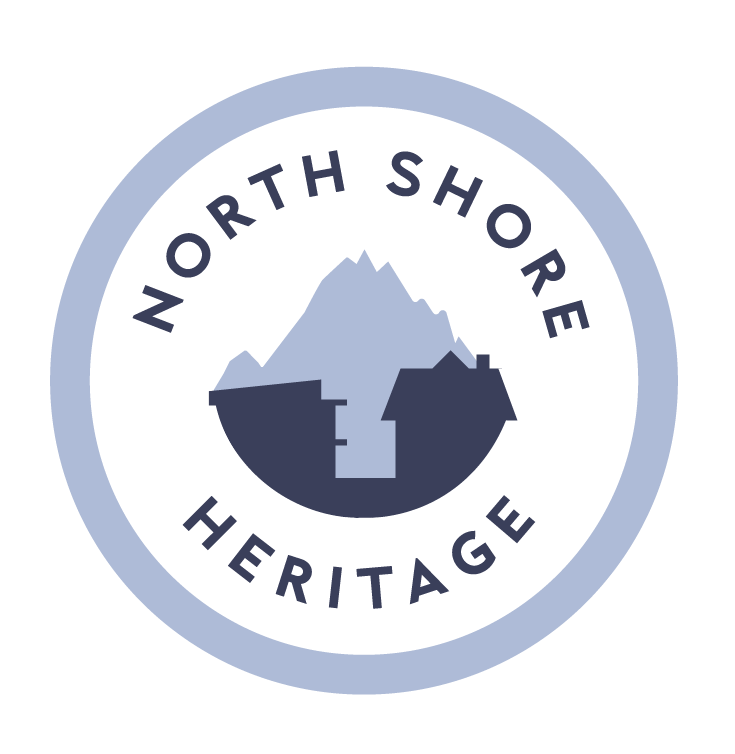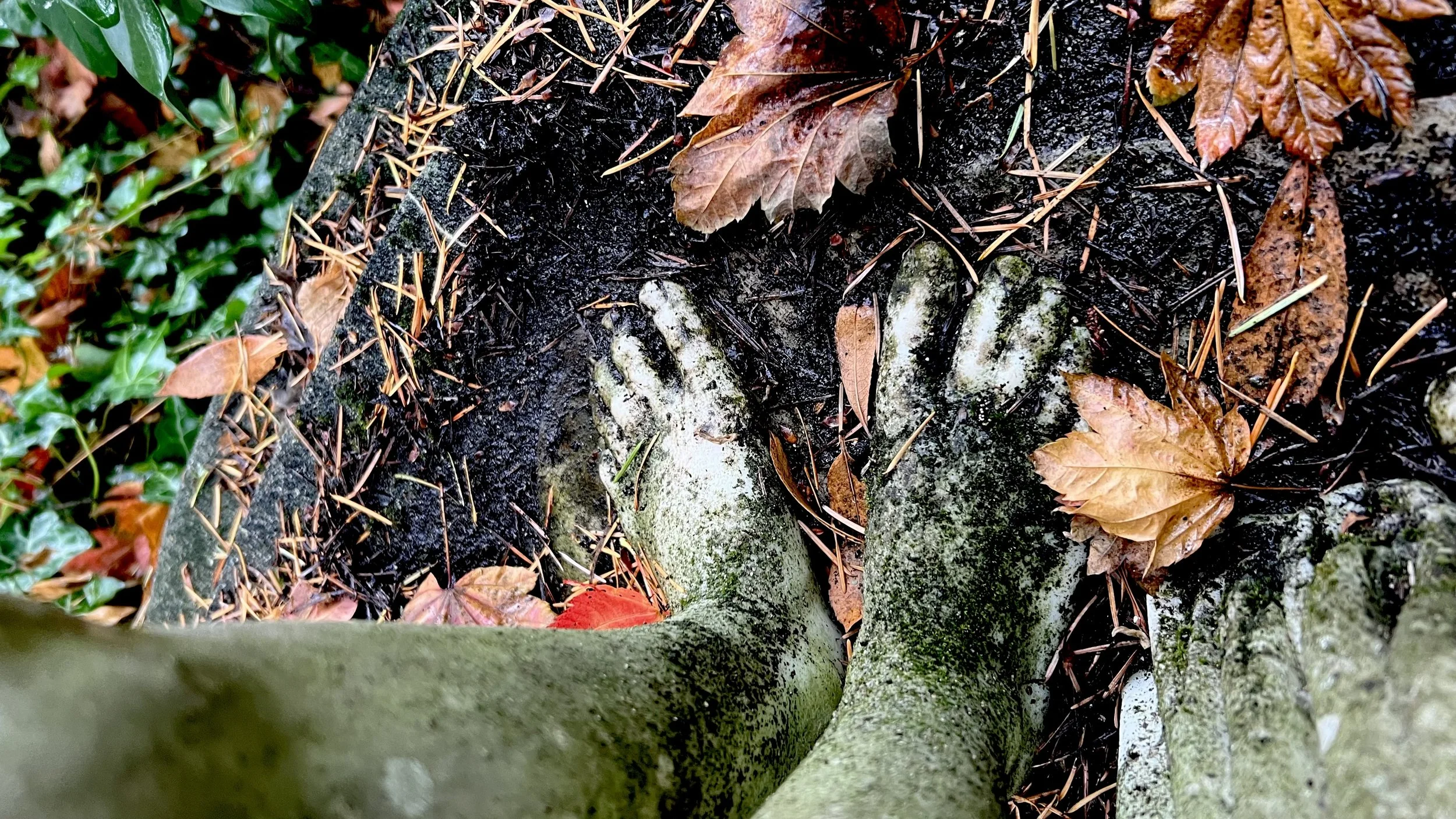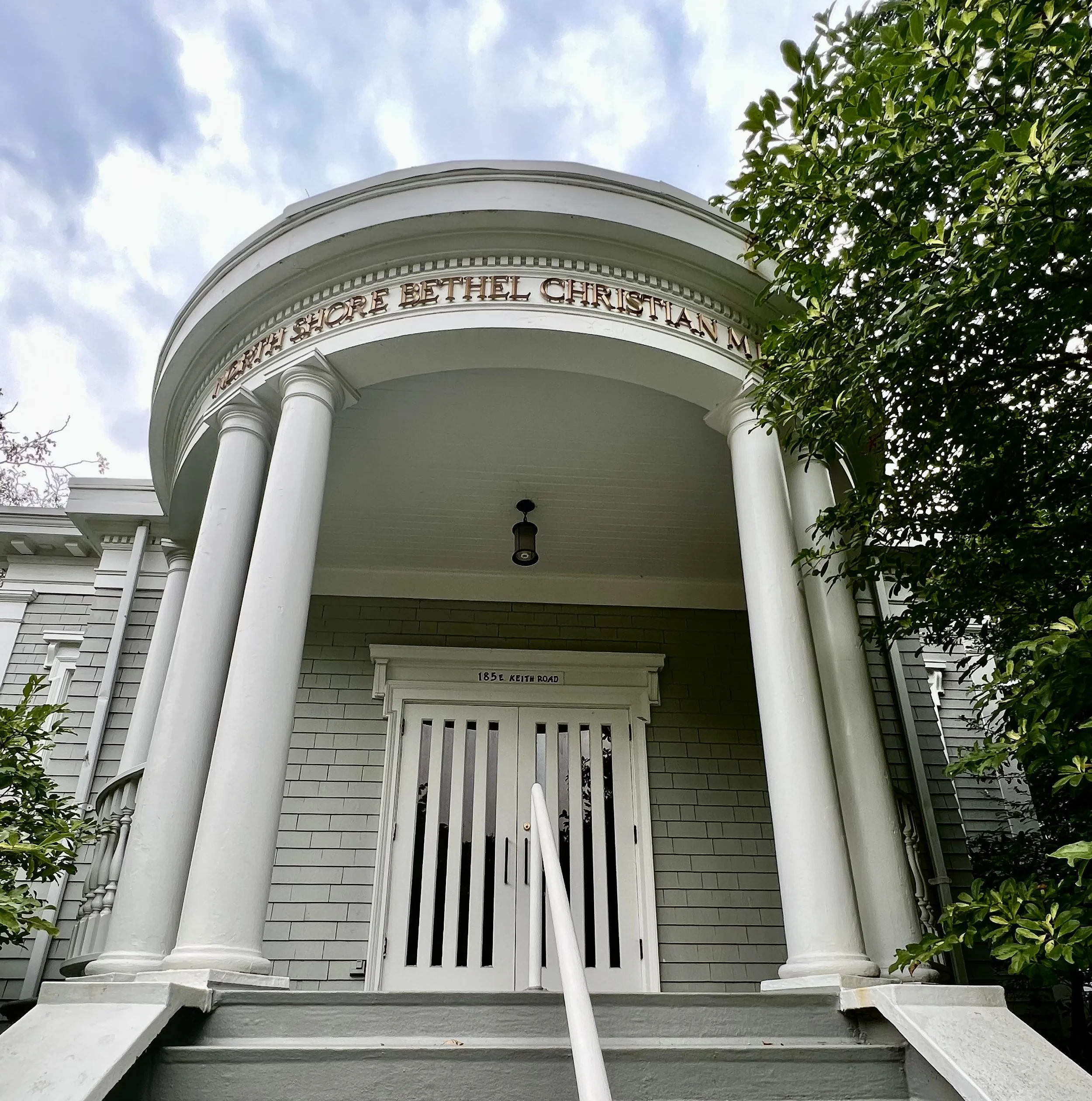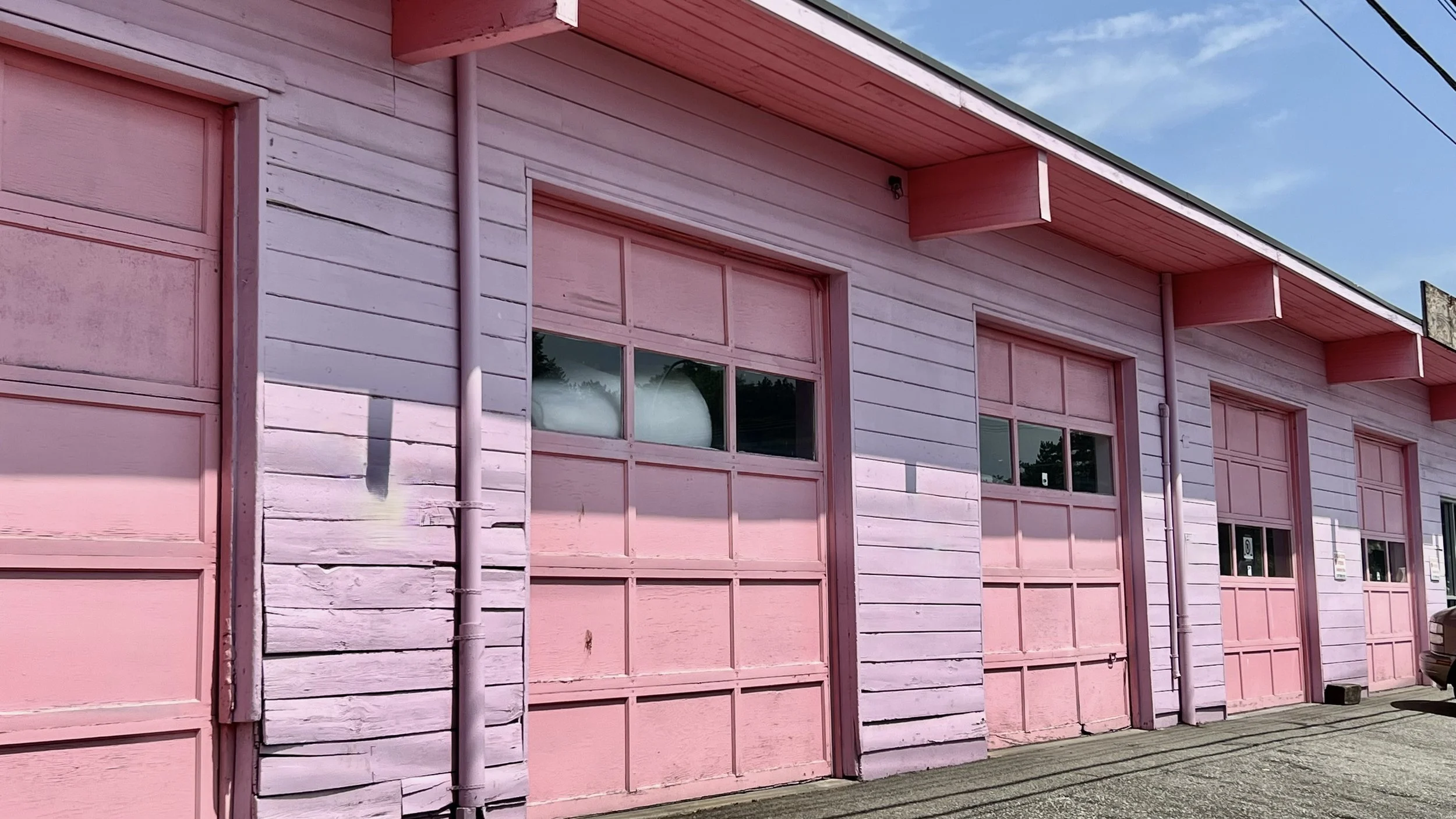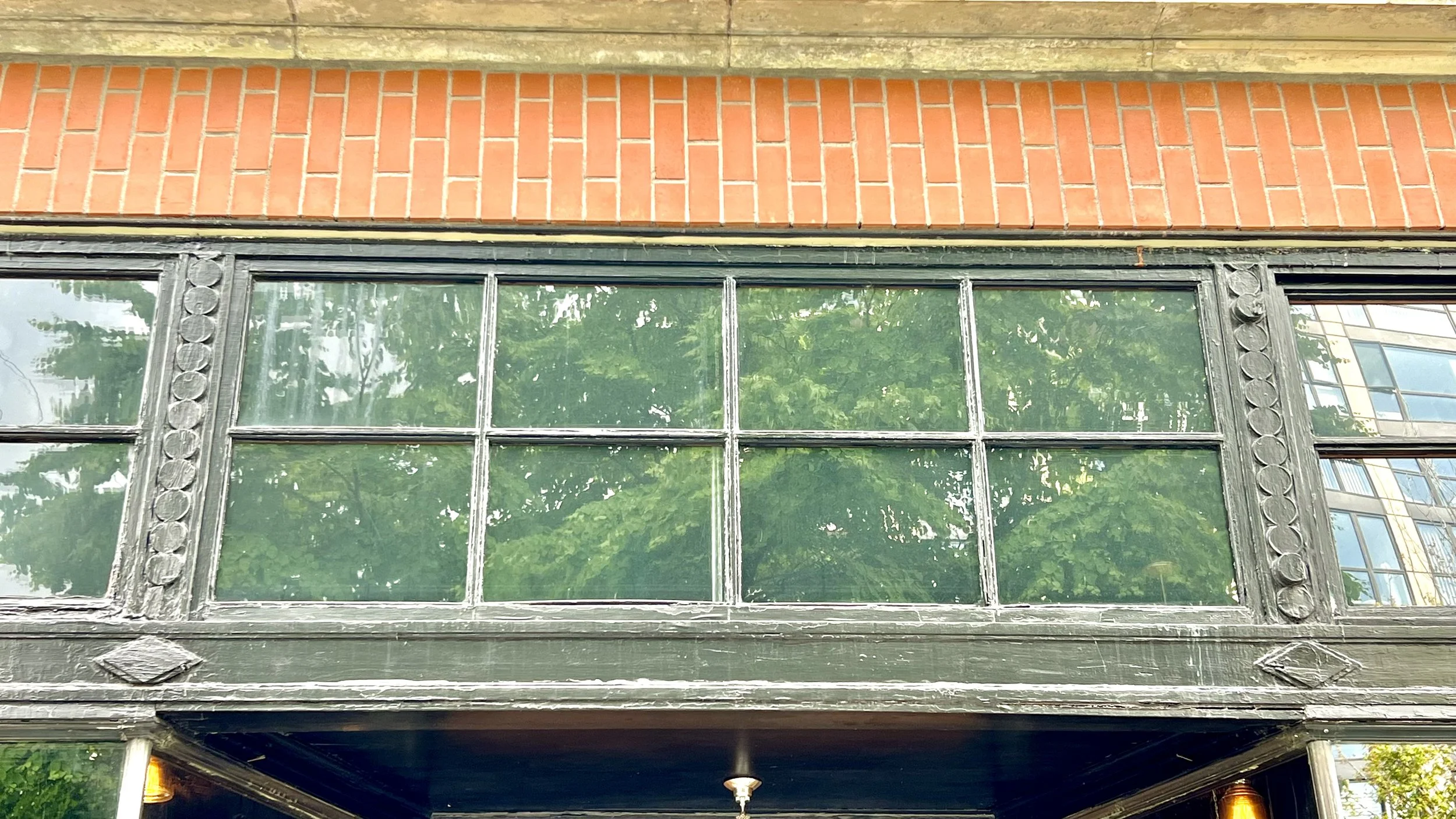If you’ve ever parked at the West Vancouver Municipal Hall in the parking lot by 16th St. and Fulton Ave or driven by on Fulton and missed the beautiful marble statue carved in a Classical Greek style, you’re not alone. The landscaping on the corner of the parking lot has grown over and around the statue and this ‘Marble Lady’ seems to have been forgotten to the mists of time. Where did she come from and why does it appear she’s been forgotten? Read on to find out the fascinating history behind this marble sculpture.
The Legacy of the 2nd WV Boy Scouts
Have you ever wandered up 17th Street in West Vancouver and enjoyed the shade of the green canopy of trees that create an arbour from Marine Drive up to Inglewood? In addition to being a welcome respite from the ravages of climate change, these “heritage” trees, and others on 13th and 14th, have a story to tell!
John Linn and his Promised Land!
Lynn Valley. From Lynn Peak to Lynn Creek, it’s made up of Lynns. There is Lynn Valley Road, Lynn Valley Centre, Lynn Valley Library, Lynn Canyon Park, Lynn Valley Suspension Bridge, Lynn Valley Ecology Centre, Lynn Headwaters, Lynnmouth, Lynmour, Lynn Avenue. And there is Lynn Creek where it all started with John Linn and his promised land.
Arthur Diplock's Electric Sawmill
One of the early pioneers on the Burrard Inlet’s North Shore, Arthur Diplock, is known for establishing in 1902 the Western Corporation, a multifaceted conglomerate involved in real estate, house building, road works and sales of coal and lumber. His legacy should be equally remembered for the construction in 1906 of what was arguably the first electric sawmill in the Pacific northwest. Glory times followed, but the Diplock story is not without its tragedy, as we will discover.
185 E. Keith Rd: Classically Beautiful
185 E. Keith Rd in North Vancouver is a unique and beautiful building in the Victoria Park area with Classical architectural features. Built in 1925, its design embodies the Classical ideas of durability, strength and symmetry, and these qualities, paired with its beauty, have made it a heritage landmark in the area for nearly 100 years. This ancient design aesthetic paired well with the Christian Science faith, but is also timeless and without denomination, and can be appreciated by anyone. Learn more about this building and other similar local Christian Science churches as well as a little about the faith that built them.
Putting the Grand in Grand Boulevard!
The Ellis Residence at 800 Grand Boulevard is one of the nicest heritage homes I’ve ever seen! It definitely puts the “Grand” into Grand Boulevard! And this was exactly the goal of the North Vancouver Land & Improvement Company when they first proposed the Grand Boulevard development in 1906. Grand Boulevard was marketed as a high-class residential neighbourhood, with a required minimum building cost of $4000, to ensure a certain size and quality of home. The original homes were mostly built in the arts and crafts style including 800 Grand, which was designed by the architectural firm of Maclure and Fox in a traditional half-timbered Arts and Crafts style. Jenny Morgan, my fellow blog writer, and I were privileged to get a tour of this house earlier this year and after our tour, as we walked back to our cars, she told me this is her “dream” house! I then asked her how we might get ourselves adopted by the current owners, Ken and Jenny Tekano, so we could live there too! The house is stunning, from the first glimpse through the pergola and in every room throughout the house. Read on to see why we fell in love with this home, learn more about the restoration work the Tekanos did (in their own words) and learn about the 15 families who came before them.
The Evolution of the Corner Store
Independent Corner Stores, once familiar features of local life, are gradually fading from our street corners. Owning a corner store often gave newcomers not only a livelihood, but also a roof over their heads and, for many, they served as a gateway business to move up the socio-economic ladder. Although many of the original corner stores are gone, a few still exist as corner stores, while many of them have been re-invented as coffee shops and sandwich shops, which still thankfully serve as local gathering spots.
Pemberton Ave: A Mid-Century Celebration of Colour and Walkability
Walking down Pemberton Ave in North Vancouver you could be easily fooled into thinking you’re back in the 1950s or 1960s if you ignore the modern cars lining the street. Just like the nearby Norgate Park subdivision, whose houses were originally painted every colour of the rainbow, many businesses on Pemberton Ave have continued the mid-century tradition of bright colours to this day. Join us on a virtual tour of this colourful and historic North Vancouver commercial district and also learn why it gets such a great “walk score” from its neighbouring communities.
Lewis Through The Decades
After the publication of my previous blog on Bob Lewis (My Bob Lewis Odyssey), Steve Gairns (my partner in the Lewis Research Project) and I received a lot of emails from owners of Lewis houses who were keen to show off their homes. Visiting these homes has been an odyssey of its own! And what I’ve learned is that the post and beam construction style which was embraced by Bob Lewis for its simplicity and inexpensive building costs, is so functional and versatile that it has allowed homeowners to easily adapt and personalize their homes to styles and standards which suit their lifestyles. Join me as we journey through the decades from an Original Lewis to a Brutalist adaptation.
Donald Hings: The Philadelphia Experiment
80 years ago this year, a group of top scientists from the US, Britain and Canada collaborated on developing a means of protecting Allied naval ships from German torpedoes. Called the Philadelphia Experiment, the event was one of the pivotal moments of World War II. Shrouded in secrecy, many have fantasized about what happened at the naval yard in Philadelphia in the late summer of 1943. Stories abound of a ship, the USS Eldridge that vanished in the night, teleporting to another place beneath a magical green glow. Sailors that disappeared in front of people’s eyes. The truth is as amazing as the fantasy. It includes one of our own: Canada’s “walkie talkie” inventor, Donald Hings, and it all started - at least for Hings - with a lucky break which facilitated his attendance at Chesterfield School for Boys in North Vancouver.
James Cooper Keith and the Ubiquitous, Eponymous Keith Road
Have you ever tried to find a Keith Road address on the North Shore? The many Keith Road sections can test the best of location locators as it starts and stops its way along a route that stretches from Second Narrows to Horseshoe Bay.
Before Marine Drive and the Upper Levels Highway connected the North Shore, Keith Road started life as a link from east to west. James Cooper Keith instigated the construction and put up an initial $40,000 to get it going. JC Keith was the second reeve (1892-1894) of the newly incorporated in 1891 District of the Municipality of North Vancouver; today his photograph hangs on the walls of the District of North Vancouver Council Chambers next to the first reeve, Charles J.P. Phibbs.
James Cooper Keith, Reeve of the District of North Vancouver, 1892 – 1894. Courtesy of MONOVA/North Vancouver Archives, Inventory No 106-15-2
In 1891, the District of North Vancouver stretched from Deep Cove to Horseshoe Bay and JC Keith wanted a road to connect the area in order to facilitate development. This process took years to achieve and encountered many problems including financial difficulties and challenging terrain. According to Kathleen Marjorie Woodward-Reynolds, in her 1943 thesis on the History of the City and District of North Vancouver, “Keith Road crossed a number of mountain streams and three rivers, the Seymour, Lynn and Capilano, which at times became raging torrents washing out bridges on several occasions.”
JC Keith first appears in records of 1876 as a banker in Victoria at the Bank of British Columbia, disappears and then reappears ten years later as a banker at the first Bank of British Columbia in Vancouver. But Keith and the bank parted ways due to Keith’s proclivity for lending money without the assurances the bank required. Nevertheless, it was reported in the 30th June, 1892, edition of Vancouver Weekly World that a large and lavish farewell banquet, with many courses, had taken place in his honour at the Hotel Vancouver where eminent guests delivered magnanimous praise and tributes along with a menu that included Fried Smelts, Young Duckling and Roman Punch. It was suggested in a toast that, “when the history of Vancouver is written the name of J.C. Keith will be a large part of it.”
Being a land speculator at heart, the North Shore offered Keith the perfect opportunity to broker deals, buy and sell land and property and make money without the constraints of bank rules. According to bcchesshistory,com, Keith was also a keen chess player and before leaving the bank, he established a chess club in 1887: “the Vancouver branch of the Bank of British Columbia, managed by J.C. Keith, opened in a building which also housed the C.P.R. offices. Within a year the Daily Herald could announce the formation of a chess club using the bank's premises – Keith was one of the founding members.” It is said that buying and selling land and property can be thought of as a game of chess, using strategic thinking and employing other elements of the game to win.
Studio portrait of the original staff of the Bank of British Columbia . Individuals identified are:
Back row (L-R): John Stewart, F.M. Black, G.V. Holt, G.F. Gibson, Middle row: H. Bonner, J.C. Keith, H. Rhodes, E.H. Roome, Front row: F. Soutan, E.H. Robins, and R.. Harvey
Source: City of Vancouver Archives, Item : LP 33 Copyright Public Domain
James Cooper Keith was born in 1852 in Strichen, Aberdeenshire, Scotland. His father is described as an Anglican minister. Keith was the fourth child of seven children and the last to be born in Scotland as the following two siblings were born in Chicago, Illinois in 1854 and 1855 and the last child in Wisconsin in 1859. By age two, Keith was in America.
Strichen, Keith’s birthplace, could not be more different than the North Shore, being located inland in a flat area situated by a river 55 km NE of Aberdeen. But Aberdeenshire must have remained in his blood as the Aberdeen Block in Lower Lonsdale (92 Lonsdale), built in 1910/1911, was originally named the Keith Block with a “K” in the shield above the doorway. By 1912 it was known as the Aberdeen Block. And there is a Chicago connection in that the building as, according to the entry in Canada’s Historic Places, the Aberdeen Block “reflects the architecture of the Chicago School in its tripartite arrangement and symmetrical composition.”
The Aberdeen Block, 92 Lonsdale Avenue, Courtesy of MONOVA/North Vancouver Archives, Inventory No 5824
The doorway at the “Aberdeen” Building with the “K” for Keith as a tribute to its original name, the Keith Block. Photo by Jennifer Clay.
There is another Keith Block at 93 Lonsdale. Built in 1908, it is a three-storey, flat-roofed, wood-frame, Edwardian-era structure with a distinctive curved corner entranceway that today is home to the 49th Parallel coffee shop. Grab a coffee, take a seat and imagine the streetscape as it was in 1908. The ferry dock and Wallace Shipyards are close by, Lonsdale is a hub of commercial activity, there are wooden sidewalks, horse drawn carts and an early electric streetcar.
1908 construction of the Keith Block, 93 Lonsdale Avenue. Courtesy of MONOVA/North Vancouver Archives, Inventory No 9248
Current photo of Keith Block, Courtesy Colin Lawrence, with a cameo by the author
From the coffee shop it is a short uphill stroll to East Keith Road which is part of North Vancouver’s Green Necklace. From there, heading east, Keith Road takes you to the southern boundary of Grand Boulevard and the 1910 Keith Residence at number 750. It fittingly borders the boulevard and Keith Road and is an imposing blend of the Tudor Revival and Arts and Crafts styles. An impressive house, but did he live there? Reports suggest he didn’t.
Keith House at 750 Grand Boulevard, 1970. Courtesy of MONOVA/North Vancouver Archives. Inventory No. 250
Further east on Keith Road is the recently expanded Keith Bridge over Lynn Creek feeding traffic to the Second Narrows and Seymour Parkway, the latter originally part of the Keith Road network. One of the Keith Bridge off ramps has replaced Keith Lynn School and a recent culvert takes Keith Creek under Mountain Highway.
Keith Road splits into East and West at Lonsdale circling Victoria Park. Just past Queen Mary School, at 235 West Keith Road, the road intersects with Mahon Avenue then continues down Keith Boulevard until it disappears at Bewicke and Marine Drive which was originally a segment of Keith Road.
Mahon Avenue and Mahon Park are named after Irishman, Edward Mahon, of the North Vancouver Land and Improvement Company and, like the DNV, it incorporated in 1891. The principal shareholder was an Anglo/Irish man named John Mahon who appointed Edward, his younger brother, to be the company president in North Vancouver. Another shareholder in the company was James Cooper Keith. It was the involvement with this company that furthered the development of the road.
Photo of the City Fathers, 1907. Edward Mahon seated 2nd from right,, followed by Reeve Kealy (an employee of Edward Mahon and James Cooper Keith at the Western Corp), followed by James Cooper Keith. Image Courtesy of MONOVA/North Vancouver Archives. INV- 96
After disappearing at Bewicke and Marine, West Keith Road reappears in Pemberton Heights starting at Mackay Avenue heading west then north splitting into two West Keith Roads, one leading to Capilano Road, the other to a dead end. Across the Capilano River on the west side (now known as West Vancouver) is Spuraway Gardens and another piece of Keith Road that was once connected to the east side of the river by the Keith Road Bridge. Jennifer Clay explained in her blog post on Spuraway Gardens that Edward Mahon, in 1910, hearing that the Streetcar Line would be extended to the Keith Road Bridge, “decided to buy a prime 40 acre lot of land to capitalize on the expected development of land west of the Keith Road Bridge.”
Street Car No 24 in 1910 at Keith Road and 22nd Street at Mackay Creek. Courtesy of MONOVA/North Vancouver Archives, Inventory No 6583
Keith Road continues past Spuraway Gardens and then crosses over Taylor Way and today it disappears at 13th and Marine Drive. In 1908 the Old Keith Road would have continued to what was then Lawson Avenue, now 17th Street. Today John Lawson Park is situated at the foot of 17th Street and next door at 1768 Arglye Avenue is the Navvy Jack house. Built in 1872, it is the oldest settler structure in West Vancouver and thought to be the oldest continuously occupied house in the Lower Mainland. The now vacated building was recently threatened with demolition but due to the perseverance and resourcefulness of concerned citizens it will be restored and take on a new life as a coffee house venue.
March 16, 1908 photograph of a group of people standing outside the Lawson family home, Hollyburn House, located at the foot of Lawson Avenue [17th Street]. The house is also known as the Navvy Jack Thomas house. Courtesy of West Vancouver Archives. Image 097.WVA.LAW
The original owner, Navvy Jack Thomas, was a Welsh, Royal Navy sailor who abandoned that life to settle here. He married the granddaughter of the Squamish Nation Chief Kiepalano and they had three daughters. Their father, Navvy Jack, died suddenly in Barkerville – there are various dates given but possibly 1897 - where he had been pursuing a venture financed with funds taken against the house. To clear the debt the house was sold at a bargain price to Keith in 1905 who sold it the following year to John Lawson.
Phyllis Sarah Walden said in her 1943 UBC thesis that “prior to the incorporation of West Vancouver in 1912, Keith Road, Marine Drive and a few other streets were the only routes available for horse drawn vehicles. Keith Road extended from the Capilano River to Eagle Harbour but was frequently obstructed by fallen trees and washed-out bridges.” Today, Keith Road between Marine Drive and the Upper levels west of West Bay snakes around appearing and disappearing with its final stop Horseshoe Bay where B.C. Ferries is located at 6750 Keith Road. Close by are Passage Island and Bowen Island.
James Cooper Keith had a hand in countless real estate pies. At one time, it seems, he owned Passage Island that he is said to have sold in 1893 for a dollar an acre. But then rather confusingly, it is also recorded that in 1958 his daughter’s executor sold Passage Island for $7,000. On Bowen Island he owned considerable acreage in the Hood Point area where the Howe Sound Hotel was developed by a lessee. In 1904, Governor General Lord Minto, a Scotsman, on his farewell tour as GG, arrived unexpectedly having disembarked nearby and signed the register at the hotel. The reason for the stop is not recorded but one article suggested that it was the Scottish connection between Minto and Keith. When the lessee hotel owner encountered financial difficulties, the hotel reverted to Keith who made it a family summer home called Invercraig.
Keith family summer home, the Invercraig Lodge, Hood Point, Bowen Island, the year that it ceased to be the Howe Sound Hotel. ca.1911. Courtesy of Bowen Island Museum and Archives
On Monday 22nd April, 1907, page one of The Province ran an eye-catching article claiming that JC Keith was about to inherit many millions from the estate of “Silent” Smith of New York, a financier and a cousin of Keith who died suddenly at age 52. The inheritance, it asserted, would make Keith by far the wealthiest man in Vancouver. Keith’s mother, Christian, was a Smith. Her brother George S. Smith’s son James, known as “Silent” Smith, inherited a fortune from another George Smith, part of the same Smith family, who never married so had no direct heirs. This George Smith, known as George “Chicago” Smith, had been a canny and capable Scotsman who made an enormous fortune establishing a successful bank in Chicago. Both of the George Smith cousins, at different times, crossed the Atlantic from Scotland to settle in Illinois and both were born in Old Deer, Aberdeenshire. Old Deer sits ten kilometers down the road from Strichen where James Cooper Keith was born.
Towards the end of the following year on 11th November, 1908, the Victoria Daily Times ran an article saying that James Cooper Keith, “one of the wealthiest citizens of Vancouver, and a year ago made an heir of “Silent” Smith, New York millionaire, will be a candidate for mayor of Vancouver” indicating that Keith had indeed inherited Smith’s large fortune. He was, however, an unsuccessful mayoral candidate. But what appears to be the reality of the inheritance is in a list of several Smith bequests in the Illinois, Waukegan Daily Sun, 8th May 1907, with, James C. Keith, of Vancouver, a cousin, getting $100,000. And while not inheriting millions as the Vancouver and Victoria newspapers of the day hinted at, in today’s money $100,000 US in 1907 would be worth $3.25 million.
Six years later, Keith was dead at age 62 from pleurisy but rather than leaving a fortune, he left an estate with more liabilities than assets. On Monday, June 25, 1917 on page 19 of The Province newspaper his widow and executrix, Anne Jane Keith, publicly declared James Cooper Keith’s estate as insolvent. It took until 1926 to settle the estate.
Researching JC Keith’s life for this blog post led to many dead ends, just like Keith Road. No family photos of James with his wife or daughter could be traced. Photos found were his official photo as second reeve of the District of North Vancouver, and some early group bank photos. No trace found as to what happened with the inherited money or profits from his many land deals.
A financier, a developer, a speculator and a chess player, the endgame of his life was not what was expected of the young banker who showed so much promise. At the 1892 banquet held at the Hotel Vancouver. one of the participants is quoted as saying, “Mr. J.C. Keith’s name will be as necessary to make such history (of Vancouver) complete as is that of Hamlet in Shakespeare’s great play.”
The legacy that remains of James Cooper Keith, the second Reeve of the District of North Vancouver, is with the North Shore. The Grand Boulevard Residence, the Aberdeen Block, the Keith Block and his ubiquitous and eponymous Keith Road that in some areas is a significant arterial thoroughfare and in other areas a meandering residential street.
Keith Road sign, Courtesy Colin Lawrence
Note:
“Silent” Smith, cousin of JC Smith, was born in 1855 at Millburn, Lake County, Illinois. Growing up, he was, "thought to be a morose loner by playmates" and became known as "Silent" Smith. He moved to Brooklyn, New York, and was a senior partner of Geddes & Smith, Brokers. His father was a cousin of George “Chicago” Smith, 1808-1899 and in 1899 "Silent Smith" inherited $22 million of Chicago Smith’s $52 million fortune. On September 13, 1906, at Alvie, Inverness-shire, he married the former Mrs Annie (Armstrong) Rhinelander Stewart, of Baltimore. He died in 1907 while on honeymoon in Japan.
Except where indicated, text and images Copyright @ North Shore Heritage and Anne-Marie Lawrence 2017-2023. All rights reserved. Republication in whole or in part is prohibited without the written consent of the copyright holder.
Acknowledgements, Resources and Notes:
MONOVA, North Vancouver Museum and Archives are an excellent and valuable source of information and photos. Special thanks to Christy Brain. https://monova.ca/archives/
Jenny Morgan, NSH Blog writer, who so kindly searched through archival newspaper clippings to reveal buried aspects of JC Keith’s life – a huge thank you.
A History of the City and District of North Vancouver. Thesis October 1943. Kathleen Marjorie Woodward-Reynolds.
A History of West Vancouver, 1943 Thesis, UBC, Department of History, Phyllis Sarah Walden.
Cathro, Robert J. British Columbia History; Vancouver Vol. 38, Iss. 4, (2005): 6-9
Bowen Island Museum and Archives.
Canada’s Historic Places: A Federal, Provincial and Territorial Collaboration.
Ancestry.ca and Ancestors Family Search.
"Hello?....It's For You"
The small, one story commercial heritage building at 117 W. 1st st. has so many beautiful, decorative features that you’d never guess it started out as one of B.C. Telephone’s North Vancouver offices. Having had many varied uses over its nearly one hundred years of existence, the building currently houses a sushi restaurant, and I was amazed at how nearly all of its original features are still intact and in good shape. Explore this beautiful building with me and learn some history about the telephone boom as well as about the company that helped to make the phone more than just a passing fancy in North Vancouver and the rest of B.C.
Bungalow Love
What do you think of when you hear the word ‘bungalow’? A single-storey home that was hastily constructed to accommodate shipyard workers during WWII? A small non-descript home constructed during the 1950’s and 1960’s? As it turns out, the word ‘bungalow’ and its structure have evolved over hundreds of years, with its most handsome and everlasting version in the form of the Craftsman bungalow. And guess what? We do not need to look any further than the City of North Vancouver to see an amazing collection of these spectacular homes! So, stick with me as I give you a brief history, highlight some of the architectural features and then showcase the bungalows of the City of North Vancouver. And afterwards, I’d be willing to bet that you too might be afflicted with a case of Bungalow Love!
404 Somerset - A Tale of Pioneers and Crime Busters!
North Shore Farm to Table Tradition
The Silk Purse: From Summer Cottage to Vibrant Arts Centre
The Ambleside waterfront is home to a number of heritage buildings that were repurposed as Arts and Culture facilities. One of them, The Silk Purse, has a long, nearly century-old history. Discover how this building went from summer cottage-to family home-to having a new life as a vibrant hub for Arts and Culture, and read about the benefits of repurposing heritage buildings for community use.
Grouse Mountain Chair Lift Adventure
The theme for heritage week this year is Always in All Ways. What a wonderfully wide-open theme! While we at North Shore Heritage tend to focus on built heritage, we also recognize the connection of built heritage to both cultural and landscape heritage. In the blog today, I’m going to start with a photo that represents a piece of my personal heritage but after a little research on my part, I realized that this photo also tells a pretty interesting story related to the history of Grouse Mountain and North Shore tourism. Let’s start with the photo…
Sewell Prescott Moody - From Good Fortune to Calamity!
The next time you walk along Moody Avenue, or stroll though the recently created, impressive, Moodyville Park area, or drive along the Low Road past the imposing grain elevators, give a thought to a young, ambitious and savvy Yankee Trader named Sewell “Sew” Prescott Moody who developed and expanded the successful Moody Sawmill Company. He also established the first non-indigenous community on the shore of Burrard Inlet, Moodyville, where the grain elevators sit today with no evidence of the settlement. Fate intervened in his successful life and Sew went from being in the right place at the right time to being in the wrong place at the wrong time.
The History Behind the Facade
An old house can be admired for the uniqueness of its design. What makes it important, however is the history behind the façade, the people that have lived there, how and why it was built. Take Cornish House in Upper Lonsdale for example. Half timbered roughcast stucco walls sit beneath a gabled roof. One enters a hallway decorated in wainscotting and timbered ceilings, perhaps unknowing of the family whose name describes the property.
437 Somerset: A Storied History
Some houses really seem to attract interesting occupants and owners-or is that interesting people are attracted to certain houses? Either way, some houses have had so many occupants with fascinating histories and adventures that it’s hard to imagine there isn’t something special or unusual going on in that respect. 437 Somerset is definitely one of these houses. It’s amazing that so many movers and shakers chose to live in the house at some point in the last 110 years. Read on to learn about these colourful characters!
